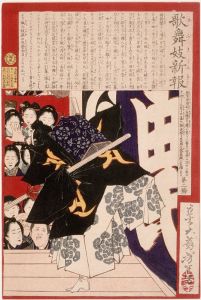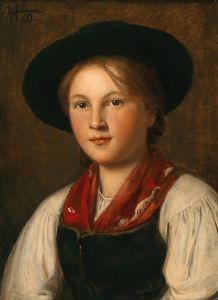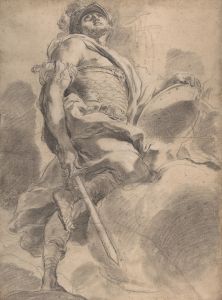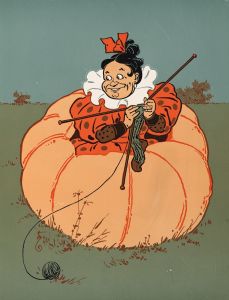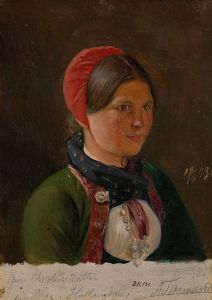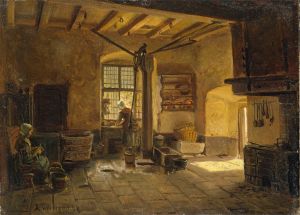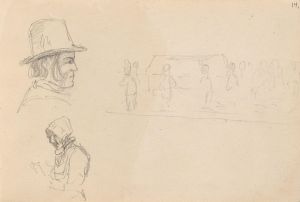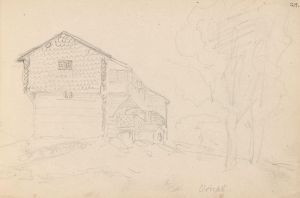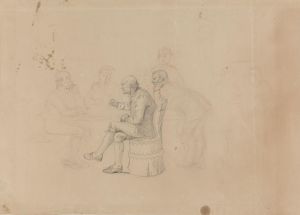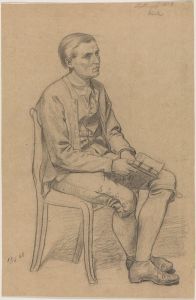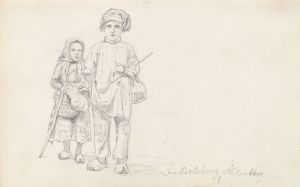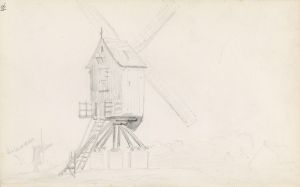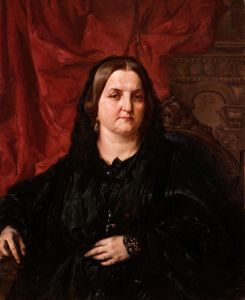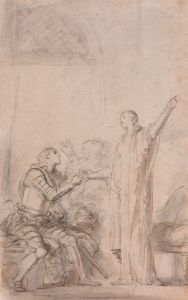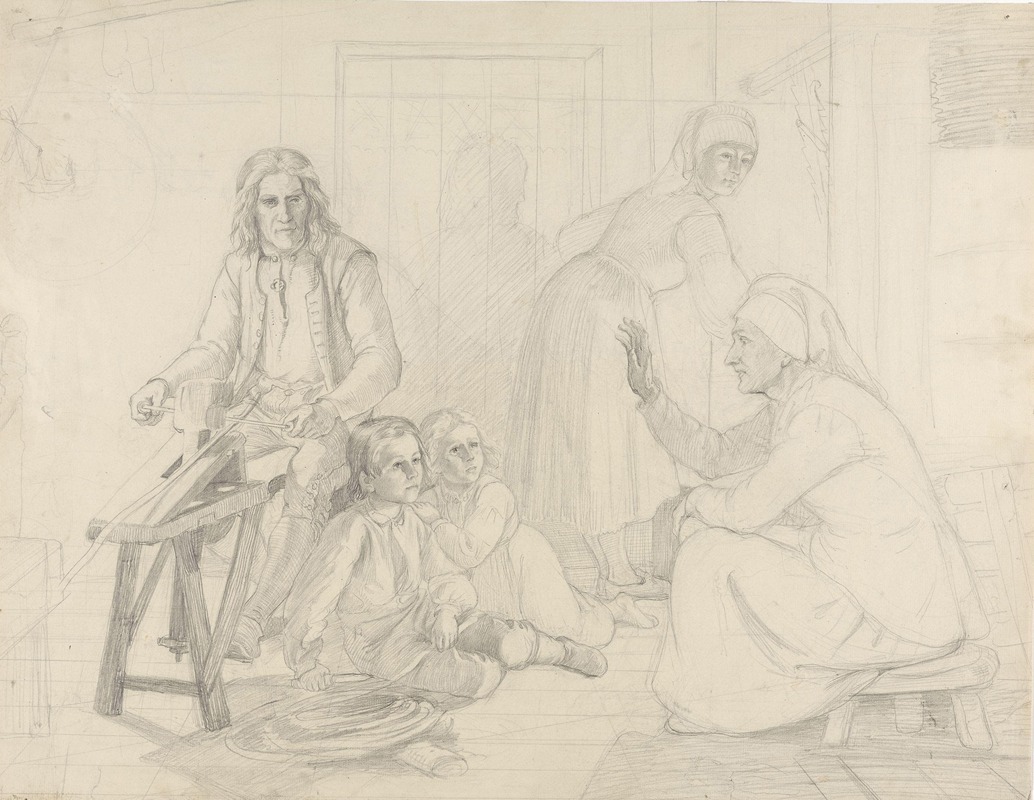
Eventyrfortellersken
A hand-painted replica of Adolph Tidemand’s masterpiece Eventyrfortellersken, meticulously crafted by professional artists to capture the true essence of the original. Each piece is created with museum-quality canvas and rare mineral pigments, carefully painted by experienced artists with delicate brushstrokes and rich, layered colors to perfectly recreate the texture of the original artwork. Unlike machine-printed reproductions, this hand-painted version brings the painting to life, infused with the artist’s emotions and skill in every stroke. Whether for personal collection or home decoration, it instantly elevates the artistic atmosphere of any space.
Adolph Tidemand's painting Eventyrfortellersken (translated as The Storyteller) is a notable work by the Norwegian artist, created in 1854. Tidemand, a central figure in Norwegian Romanticism, is renowned for his depictions of rural life, folklore, and national identity during the 19th century. This painting exemplifies his focus on capturing the cultural traditions and everyday life of Norway's rural communities.
Eventyrfortellersken portrays a scene in which an elderly woman, the titular storyteller, is surrounded by an attentive group of children and adults. The setting is a traditional Norwegian interior, with rustic furniture and a warm, intimate atmosphere. The storyteller is depicted mid-narration, her expressive gestures and animated demeanor suggesting the oral tradition of sharing folktales and legends. The audience's varied reactions—ranging from curiosity to amusement—highlight the communal and intergenerational nature of storytelling in Norwegian culture.
The painting reflects Tidemand's interest in preserving and celebrating Norway's cultural heritage during a period of national awakening. In the 19th century, Norway was undergoing a cultural renaissance, with artists, writers, and scholars seeking to define a distinct national identity following centuries of union with Denmark and Sweden. Folklore and oral traditions were seen as vital components of this identity, and Tidemand's work often sought to document and romanticize these traditions.
Tidemand's meticulous attention to detail is evident in the painting's composition and execution. The clothing of the figures, for instance, reflects traditional Norwegian costumes, known as bunad, which vary by region. The interior elements, such as the wooden walls and household objects, are rendered with precision, providing a glimpse into the material culture of 19th-century rural Norway.
The painting was well-received during Tidemand's lifetime and remains an important example of his oeuvre. It is often cited as a testament to his ability to combine ethnographic accuracy with artistic sensitivity. Today, Eventyrfortellersken is housed in the National Museum of Art, Architecture and Design in Oslo, Norway, where it continues to be appreciated for its cultural and historical significance.
Adolph Tidemand (1814–1876) was a leading figure in Norwegian art, and his works, including Eventyrfortellersken, played a significant role in shaping the visual representation of Norway's national identity. His collaboration with landscape painter Hans Gude on works such as Bridal Procession on the Hardangerfjord further cemented his legacy as a key contributor to Norwegian Romanticism.





